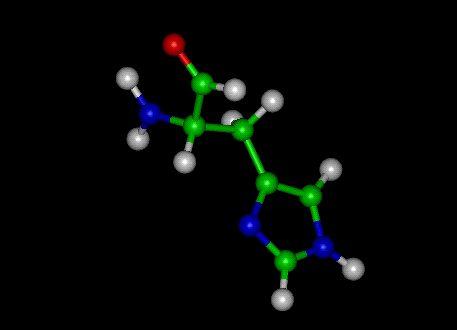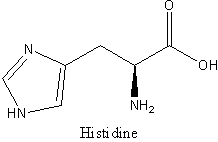Molecular Weight: 155.16
Isolectric point (pH) 7.47
Molecular Formula: C 6H9N 3O2
Histidine is one of the 20 most common natural amino acids, coded for in DNA. Nutritionally, in humans, histidine is considered an essential amino acid, but mostly only in children. The imidazole side chains of histidine and the relatively neutral pK (ca 6.0) mean that relatively small shifts in cellular pH will change its charge. For this reason, this amino acid side chain finds its way into considerable use as a co-ordinating ligand in metalloproteins (e.g., Hemoglobin), and also as a catalytic site in certain enzymes. Histidine is necessary for growth and repair of tissue, production of red and white blood cells, and preservation of myelin sheaths.
The amino acid is a precursor for histamine biosynthesis. Histamine is released during an allergic reaction.


